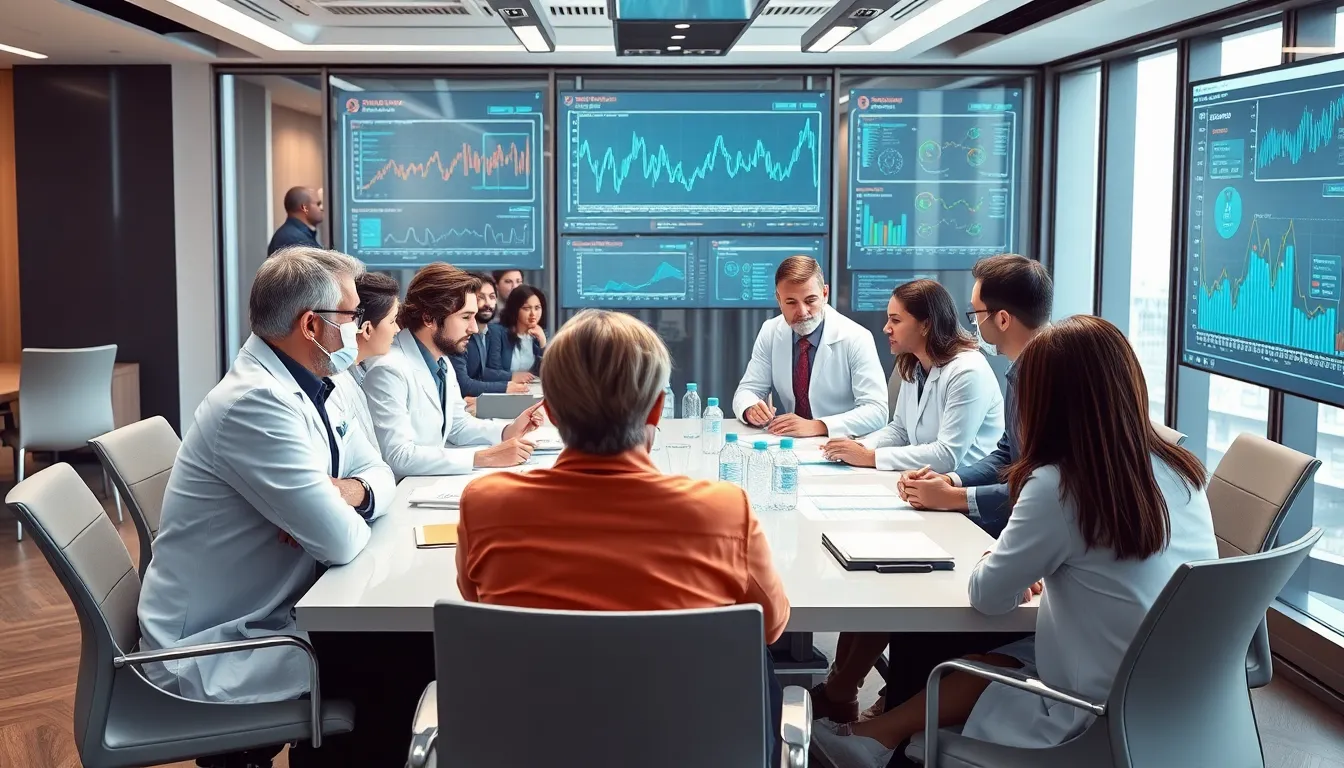As the world spins into the unknown, the future remains a tantalizing mystery, ripe for speculation. Picture this: flying cars zipping through the skies, robots serving coffee, and maybe even a cure for Monday mornings. While it sounds like a sci-fi movie, predictions about the future are more than just wild dreams—they’re a glimpse into what could be.
Table of Contents
ToggleUnderstanding Predictions of The Future
Predictions about the future capture human imagination. They represent aspirations, fears, and cultural narratives that shape societal development.
Historical Context of Predictions
Throughout history, many cultures relied on predictions. Ancient civilizations used astrology, omens, and prophecies to interpret future events. The Renaissance saw leaps in scientific predictions with figures like Sir Isaac Newton envisioning technological advancements. In the 20th century, science fiction writers such as Arthur C. Clarke and Isaac Asimov proposed futuristic concepts, inspiring real-world innovations. These predictions laid the groundwork for today’s strategic foresight, where historical trends inform contemporary visions.
Importance of Predictions in Society
Predictions hold significant value in modern societies. They guide policymakers in shaping economic and environmental strategies. Business leaders utilize market forecasts to drive innovation and investment decisions. Innovations like renewable energy systems emerged from predictive models that identified future energy demands. Additionally, forecasts help communities prepare for challenges such as climate change, health crises, and technological disruptions. Awareness of potential futures promotes proactive thinking and resilience within societies.
Types of Predictions

Predictions shape understanding of future developments across various domains. They’re critical in guiding decision-making and preparing for upcoming challenges.
Scientific Predictions
Scientific predictions focus on advancements in fields like medicine, environmental science, and astronomy. Data-driven research supports these forecasts, enhancing accuracy in areas such as climate change and disease outbreaks. For instance, climate models project temperature rises based on greenhouse gas emissions. In healthcare, advancements in genomics lead to personalized medicine, allowing tailored treatment plans. Predictions about space exploration suggest potential human missions to Mars within the next few decades, driven by technological progress.
Economic Predictions
Economic predictions examine trends in markets, employment, and global economies. Analysts utilize indicators like GDP growth, inflation rates, and unemployment levels to forecast economic conditions. For example, forecasts for the next quarter might predict a recession if inflation continues to rise. Business leaders rely on these predictions to make informed decisions regarding investments and resource allocation. Moreover, trends in consumer behavior shape strategies for retail businesses, helping them adapt to changing demands.
Technological Predictions
Technological predictions emphasize innovations that transform industries and daily life. Experts anticipate developments in artificial intelligence, renewable energy, and communication technologies. For instance, AI is expected to enhance automation in various sectors, increasing efficiency. Predictions also suggest that advancements in renewable energy will significantly reduce carbon footprints within the next two decades. Meanwhile, the rollout of 5G technology promises to revolutionize connectivity, impacting communication and data transfer speeds globally.
Methods Used for Making Predictions
Predictions rely on various methodologies to gauge future outcomes and anticipate trends. These methods enhance the credibility and accuracy of forecasts.
Data Analysis and Statistics
Data analysis forms the backbone of many predictions. Analysts utilize large datasets to extract insights that reveal trends over time. Statistical models often assess relationships among variables, enabling predictions based on historical patterns. Advanced techniques like machine learning further refine these forecasts by adapting to new information. Notably, accurate climate change models depend on meticulous data analysis to predict environmental shifts.
Expert Opinions and Forecasting
Expert opinions significantly influence prediction accuracy. Specialists in fields such as economics or epidemiology offer insights grounded in extensive experience and research. Their forecasts often incorporate qualitative assessments alongside quantitative data. Engaging multiple experts fosters a well-rounded perspective, enhancing the reliability of predictions. Forecasting committees, like those formed by the International Monetary Fund, showcase how diverse professional input contributes to informed predictions.
Trends and Patterns Recognition
Recognizing trends and patterns plays a critical role in making predictions. Observing recurring behaviors within industries can indicate future developments. Analysts often use historical data to identify cycles in consumer behavior, innovation, or economic shifts. By tracking these trends, businesses can position themselves strategically to adapt to market changes. Understanding societal shifts through patterns helps anticipate technological advancements in sectors like renewable energy and digital communications.
Challenges in Making Accurate Predictions
Making accurate predictions presents significant challenges. Factors like uncertainty and complexity complicate forecasting efforts.
Uncertainty and Complexity
Uncertainty stems from numerous variables influencing future scenarios. Changes in social, economic, and environmental conditions contribute to unpredictability. Complex systems, such as economies or ecosystems, behave in non-linear ways. Unexpected events, like natural disasters, can derail even the best-made forecasts. Predicting technological advancements further adds to this complexity, as rapid innovations redefine possibilities. Analysts face difficulties quantifying these variables, making accurate predictions more elusive.
Human Bias and Subjectivity
Human bias introduces another layer of challenge in prediction accuracy. Individuals often interpret data through personal lenses, affecting objectivity. Cognitive biases, such as confirmation bias, can lead analysts to favor evidence supporting pre-existing beliefs. Stakeholders might prioritize certain trends based on emotional responses instead of factual data. This subjectivity can skew the predictions made, undermining their reliability. Effective forecasting requires awareness and mitigation of these biases.
The future remains a canvas of endless possibilities shaped by human creativity and innovation. Predictions not only inspire but also challenge individuals and societies to think proactively about the world ahead. As advancements in science and technology continue to unfold, the ability to anticipate changes becomes increasingly vital.
By understanding the methodologies behind predictions and acknowledging the inherent uncertainties, people can better navigate the complexities of tomorrow. Embracing this knowledge fosters resilience and adaptability in the face of inevitable change, empowering communities to thrive in an ever-evolving landscape. The journey into the future is one of exploration and opportunity, inviting everyone to participate in its creation.




